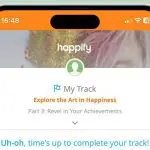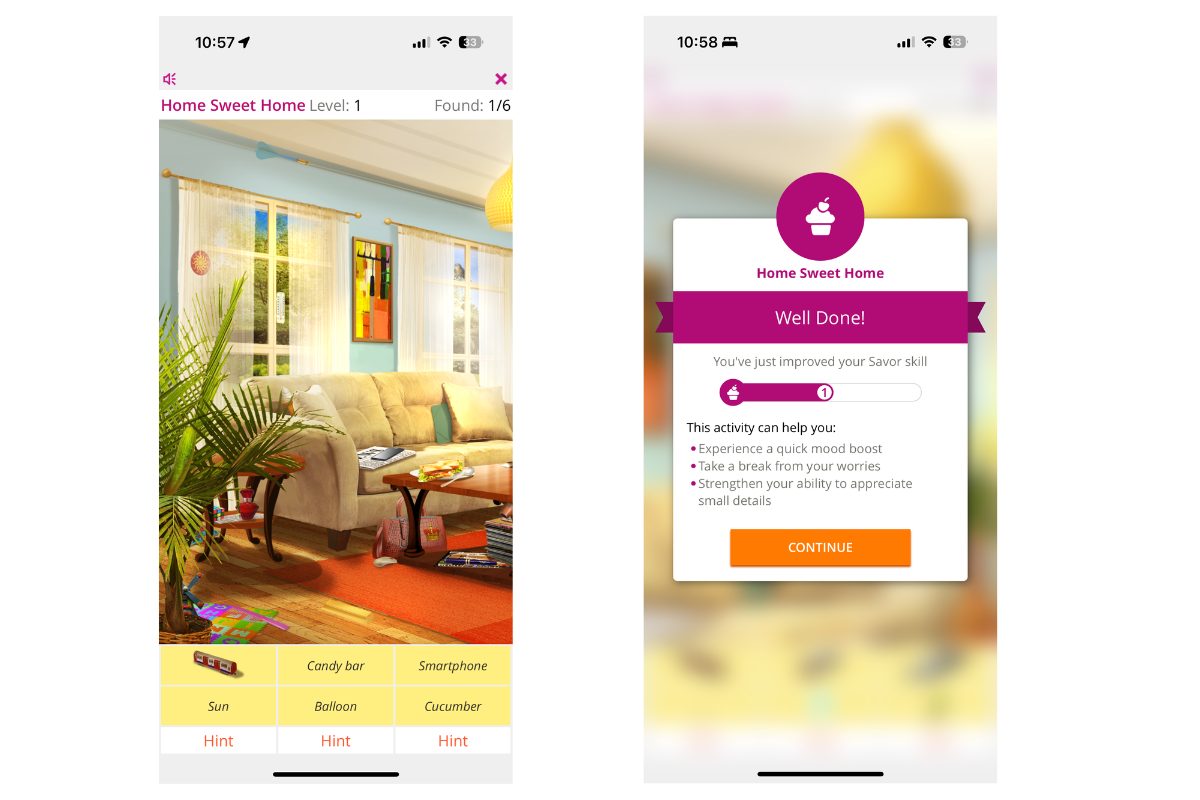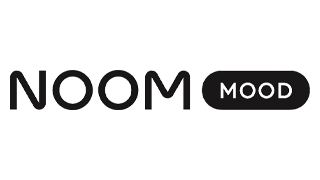Table of Contents
- We have spent over 10,000 hours researching mental health platforms and apps. Our testers signed up for the seven most popular mental health apps, approaching them with the mindset of a user.
- Our testers use each mental health app for at least two weeks, focusing on the sign-up process, listening to audio sessions, engaging with activities, and watching mindfulness videos.
- To review Happify, our Handbook Team created user accounts. We then tried the free version before going beyond the paywall by upgrading to Happify Plus. We tested Happify games, activities, and meditation exercises for two weeks to find out what a typical user might experience.
- Learn more about how we tested Happify.
Key takeaways
- Happify costs $14.95 per month, though you can purchase an annual or multi-year subscription to save on your overall costs. You may also be able to save with occasional membership promotions.
- The platform does not accept insurance, but certain health insurance carriers may offer full access to the Happify app as a member benefit.
- The app offers “tracks” on specific topics, which include activities, games, meditation exercises, and informative articles.
Happify is a self-care mental health app that is designed to “provide fun, individualized, and science-based pathways to greater happiness,” according to its mission statement. The platform is built on the practice of positive psychology, an area of mental health dedicated to the scientific study of how individuals and communities can flourish and cultivate happiness.
The Happify platform uses quizzes, games, guided meditation, articles written by experts in the field of mental health, and online community forums with others to help users learn how to disrupt negative thinking patterns and replace them with positive thinking patterns.
While it’s important to note that mental health apps like Happify are not meant to replace in-person or online therapists, they may be used to help support your overall mental health in some cases.
“These apps can make you aware and give you an opportunity to practice new thoughts and beliefs that may be helpful in your daily life,” says Shari B. Kaplan, LCSW, integrative mental health clinician at Cannectd Wellness in Boca Raton, Florida. “Many apps also offer stress management tools, like mindfulness, which is very helpful in quieting down the mind and body if you can use them properly without guidance.”
Read our Happify app review to learn more about what the app offers and if it could be a good option for you.
Happify highlights
What is Happify?
Happify is an app and an online platform that provides activities based on the science of positive psychology. This is an approach to psychological wellness that focuses on practices like self compassion, gratitude, mindfulness, and meditation. It is meant to lower stress, break repetitive, negative thought patterns, overcome self-defeating behaviors, build resilience, and achieve a sense of contentment. Positive psychology focuses on unlearning negative thought patterns and replacing them with positive patterns that are healthier and more productive.
The Happify platform doesn’t offer therapy; instead it gives you tools that can complement the therapy process. It gives you activities like guided meditations, games, quizzes, journaling, and community forums. You can have your own private user experience, or you can join a Happify-based online community where you can engage with others who are dealing with similar issues, like depression, anxiety, or stress.
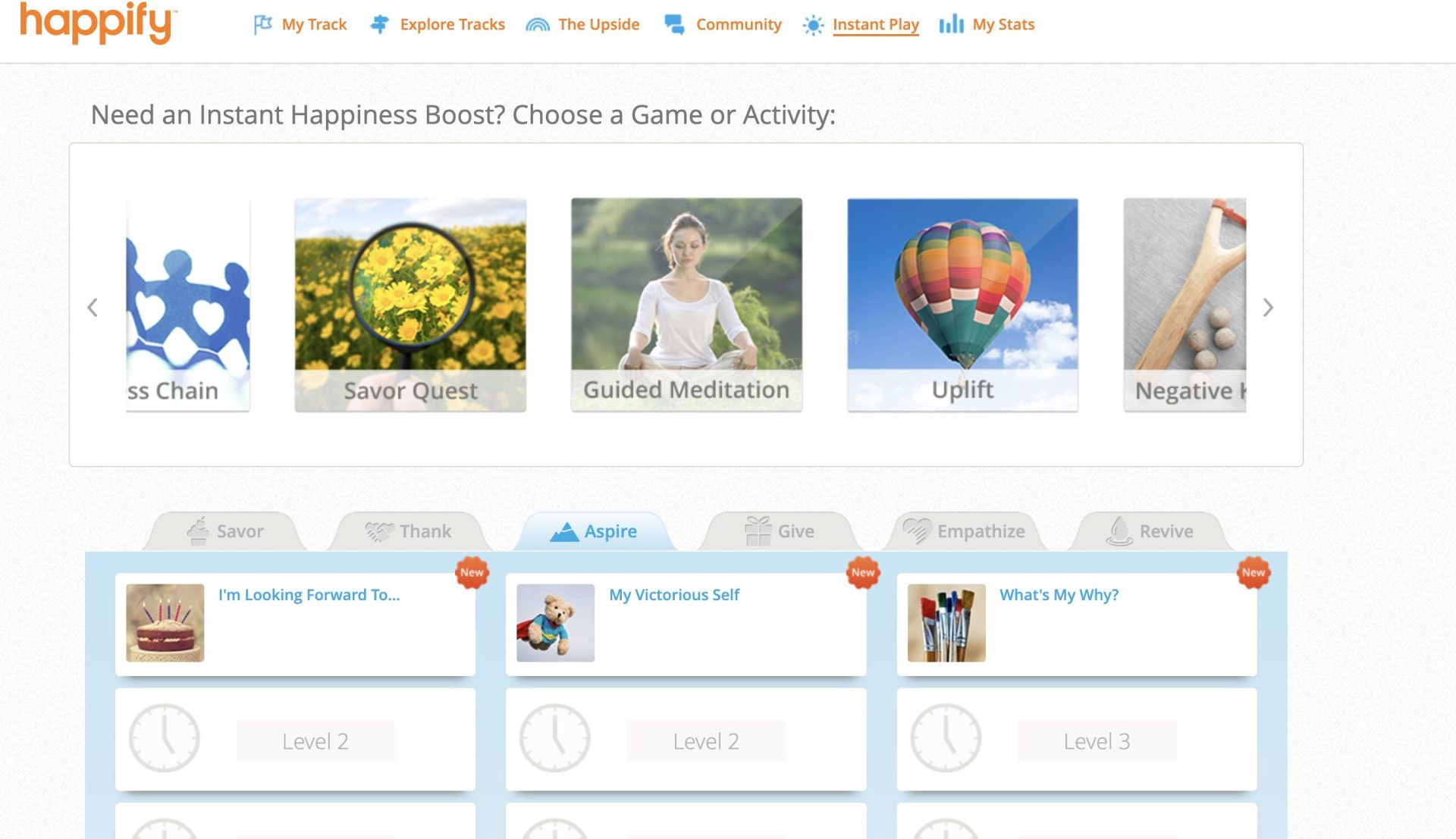
Happify may be useful for people who are looking for extra positivity and encouragement, who want help focusing on a daily positive mindset, and who are ready to replace negative thought patterns with self compassion and gratitude practices. Our testers say the guided meditations are beneficial and help put them in a more positive mind-space. But Happify is completely self-guided and doesn’t include the option for reminders or notifications. Some users may like this, since push notifications can be an annoyance or distraction, and may even trigger anxiety, according to recent research. But if you prefer having the option to schedule push notification reminders to stay on track, you may want to look for a different app, or use a different scheduling app in combination with Happify.
How does Happify work?
To get started with Happify, you have to create an account. The app is free to download and you can sign up for a free version of the service. Once you’ve provided your basic information and answered a few questions about your mental health, you can select a track to start. Depending on your responses to the initial questions, the free version of Happify will suggest a track for you to follow.
One tester describes their suggested tracks, which included Find Balance After Work Burnout, Real Happiness: The Meditation Transformation, Gain Clarity and Focus Through Meditation, Conquering Negative Thinking, and Reach for Excellence: Be a Mindful Leader. The tracks are designed to be completed within 10 days, with activities focused on reducing stress and anxiety, improving clarity and focus, self-discovery and reflection, and strengthening self compassion.

You’ll also have access to a limited number of expert-written articles and will have the opportunity to take a character assessment that can help identify your personal strengths so you can apply them in your day-to-day life. You will only have access to certain sections of your character assessment results with the free version.
To get the most out of Happify, however, you will need to upgrade to Happify Plus. You can choose between subscription options of $14.95 per month, $139.95 for a year, or $229.95 for two years (there’s also a lifetime membership for $449.95). After paying for a subscription, you get full access to your 20-page character assessment, additional tracks, games, activities, and the ability to track and measure your progress.
A subscription allows you to take advantage of a wider choice of daily activities. You can also check out Community Mode, which lets you see posts and activities from other Happify users and add your own posts to share with others.
From one of our Happify testers
“Happify recommends using the platform three to four times a week to help achieve emotional well-being and work toward your goals. I definitely felt more engaged when I used the app more consistently and did it a couple of days in a row instead of using it more sporadically.”
Using the app consistently throughout the week helped one of our testers get more out of the program. Another tester, however, felt like the games in the app did not help them relax or build any skills.
“I played one game that was supposed to enhance my ‘Savor’ skill by looking at a serene living room scene and finding hidden objects,” our tester notes. “The scene was pretty, and the game brought back good memories of Highlights magazine, but it didn’t feel effective or relaxing—just like I was checking off a box.”
Because the platform gives you multiple activities to complete each day, you may find that certain aspects of the Happify app interest you more than others. With a fully self-guided approach, Happify gives you a lot to choose from. While certain users may find this appealing, one of our testers found that having so many choices every day was overwhelming.
“A daily overview and more guidance on using the app would have also been super helpful. While some users may like the ‘choose your own adventure’ style, I felt overwhelmed by the options and activities each time I opened the app. This led to lots of random clicking and searching that vaguely felt like doom-scrolling? Definitely not the feeling I want on an app like this!” our tester says.
How to sign up for Happify
Once you click the get started link on the website or the app, Happify presents you with some questions in simple, conversational language. The questions center around your life—like how you self-identify, age, ethnicity, relationship status—and conditions that may be affecting your mental health, such as your ability to bounce back from adversity.
From one of our Happify testers
“The sign-up process was easy and took about five minutes. I answered basic questions about myself, my life, and my emotional well-being. Nothing too heavy or strenuous, and it was all multiple-choice.”
Once you create an account, you can learn more about what Happify has to offer, see the free activities, and get pricing information on membership options.
Happify tracks
Happify tracks are like mini-courses on specific life issues that can affect your mental health. Topics range from dealing with change and burnout at work to relationships, personal growth, and getting out of a rut.
As described on Happify’s website, “Each track has four parts that guide you through fun, science-based activities designed by experts.” Depending on your self-assessment, these activities can include meditation, games, activities, and quizzes to help you focus on the issues that are most affecting you. The activities are meant to help you reflect on your typical responses and patterns, and to change negative or unproductive thought patterns by disrupting and replacing them with positive self-affirmations, self compassion, and reframing others’ behavior.
We like being able to select your own track and area of interest based on the platform’s recommendations. We also like the variety of activities, though some tracks have more games than others, so if you don’t enjoy the games you may want to select a different option.
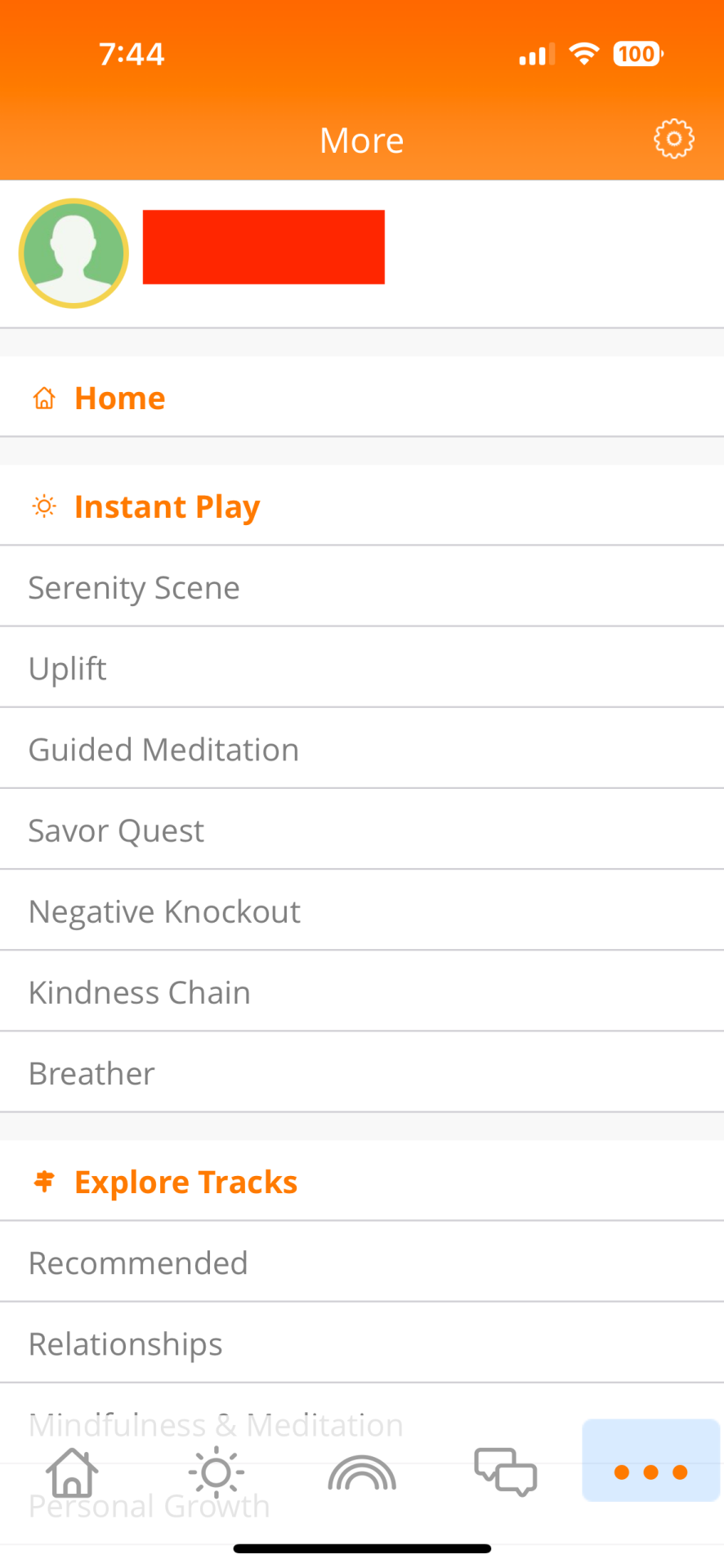
What other users are saying
The reviews for Happify are mixed. If you learn more easily through reading, there are articles written by experts from the field of psychology and mental health that are filled with useful information to help you on your mental health journey.
One user we spoke with noted that they like the included articles on Happify. “The content was digestible and easy to read, while backed by research and professionals in the mental health field,” they said. They also like The Upside section of the app, where users can find uplifting, feel-good content that is “informative and inspiring.”
The guided meditation on Happify was also a big hit with our testers. Some of our testers note that using guided meditation encouraged focused and centered thinking and was effective at helping them to achieve a calming effect. But for people who need a bit more guidance, or reminders to check in with the app each day, Happify didn’t quite measure up, and for some, the activities felt basic.
“I don’t think this app is easy to incorporate into your daily routine,” notes one of our testers. “I didn’t receive any push notification reminders to use it, and the activities seemed very surface-level and elementary. It felt more like homework than anything.”
How much does Happify cost?
You can sign up for Happify and access certain basic features and content for free. Happify Plus offers several paid membership plans that give you access to all of the features. It costs $14.95 if you pay per month, $139.95 if you pay for an annual plan, which comes out to less than $12 per month, and $229.95 for a two-year plan, which breaks down to $9.58 per month. You can also buy a lifetime, all-access membership for $449.95.
Happify is comparable in price to Headspace, another mental health app known for its meditation activities. Happify is cheaper Noom Mood, another mental health app that incorporates stress relief activities.
Some mental health apps, like Happify, offer free content to let you test them out before paying. To get a full sense of what the app offers, it may be worth it to invest in one month of service to make your decision.
“When it comes to paying for a mental health app, I believe the value largely depends on the app’s features and my personal needs,” explains Kristie Tse, clinical director with Uncover Mental Health Counseling in New York. “I’ve found that the structured support and professional insights provided in these paid versions have made a noticeable difference compared to free options,” she adds.
Is Happify covered by insurance?
Happify does not accept insurance, but may be covered by certain insurance plans. When we contacted Happify customer service, the representative told us to check with our insurance provider to find out if the cost of Happify Plus membership is covered. Some insurance carriers, like Cigna, provide no-cost access to Happify as part of its member benefits. If you are looking for mental health support at a lower cost, read our review of virtual therapy covered by insurance.
How to save money on Happify
You can save money on a Happify subscription by choosing a longer plan. If you opt for a Happify Plus monthly subscription, the cost is $14.95 per month. The average monthly cost lowers if you pay annually, and drops even more if you sign up for a two-year subscription, averaging out to as low as $9.58 each month making it an affordable mental health resource. Happify does not offer financial assistance or discounts.
Our experience with Happify customer service
We had mixed experiences when we reached out to Happify customer service. One tester reached out via email and received a response a few hours later. However, one tester had to wait several days after sending their question before they got an answer from customer service, and another tester said their question was not fully answered or explained, which left them feeling confused.
The only way to contact Happify is by email at [email protected]. It’s not easy to find the contact information on the website, and our Handbook Team considers this inconvenience to be a drawback.
Our Happify testing experience
While we found certain features we enjoyed during our testing experience, Happify didn’t meet all of our standards for the best mental health apps.
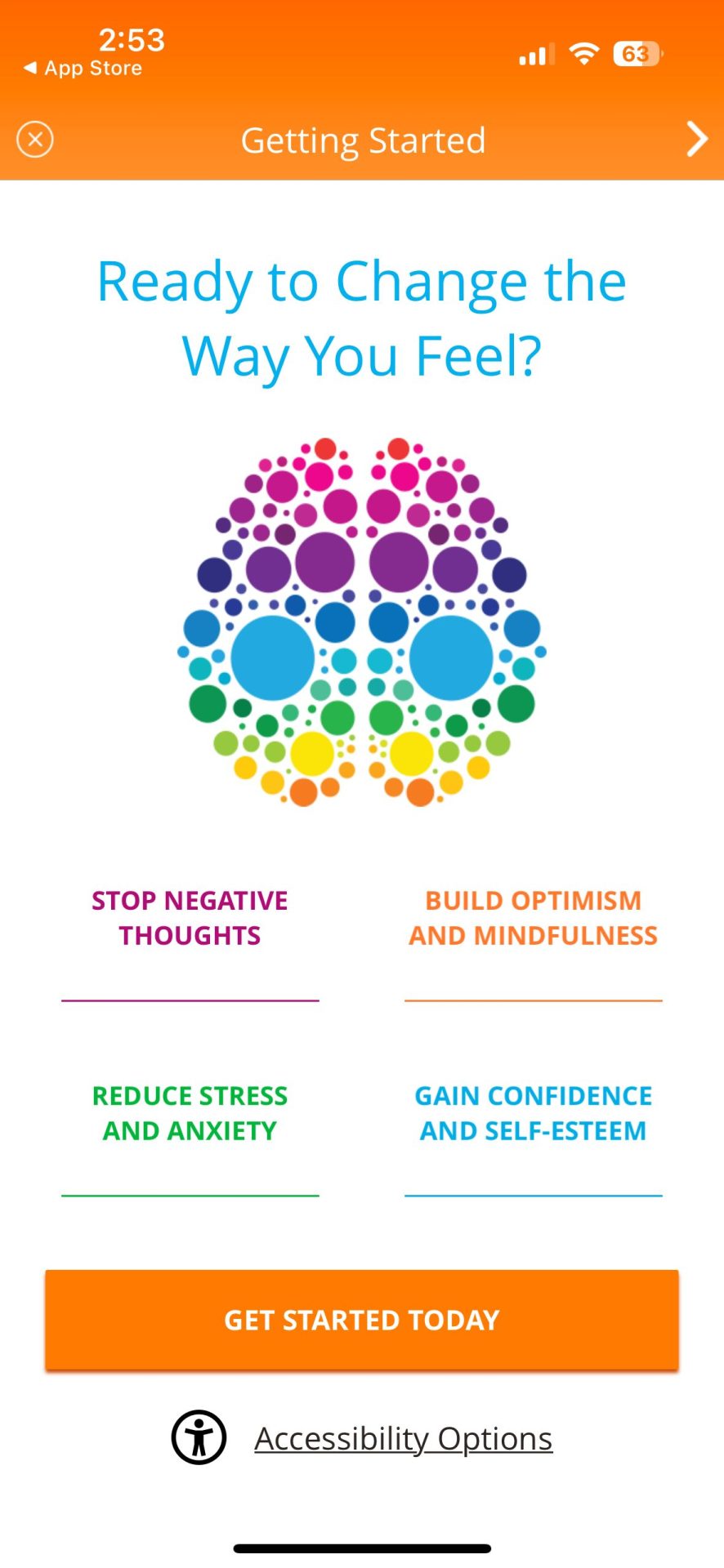
We started by creating an account and testing Happify’s free version for two days before moving on to a Happify Plus paid membership. We began with the track called “Conquer My Negative Thoughts.” The track had a lot of games, which some of the testers on our Handbook Team did not enjoy. Some say the games weren’t engaging and felt more like a hurdle to get to the next step. These testers report that many of the games were more about the challenge of completing the task at hand and less about learning a mental health coping skill or strategy.
Giving users a variety of ways to reflect on their behavioral patterns and work on their mental health was a plus. For our Handbook Team testers, the meditations on Happify were useful and the articles were quick reads filled with good information. The meditation exercises, specifically, were enjoyable and beneficial overall, according to our testers.
From one of our Happify testers
“This was my first day with a guided meditation as part of my track. I read a few positive articles with good advice and examples about everyday stressors and coping mechanisms. I really enjoyed an article about active meditation practices, and I used the walking meditation techniques when I went for a quick neighborhood walk!”
A real drawback our testers found is that there is no option for turning on daily push notifications to remind us to complete our activities. A notification could have created a sense of anticipation or excitement about diving into the app and moving forward on the tracks. One study suggests that in-app reminders may help prevent users, who are frequently experiencing multiple stressors, from dropping out of mental health apps.
Some of our testers had difficulty switching between the website and the app. In one case they were unable to sign in on the website. In another case, the tester’s progress did not transfer from the app to the website, and the tracked activities were different on each.
From one of our Happify testers
“I completed a meditation activity on the app before going to bed, and the next morning I checked my online account on my desktop, and it hadn’t logged that I completed this activity. The track I’m completing on my app is also completely different from my current track on the online platform. This is poor user experience and is frustrating if you want to switch between using the app and online platform.”
We concluded our testing experience by canceling our subscription, which was not a simple process. One tester notes, “I had to contact customer service to cancel my subscription because I couldn’t figure it out on the app. I received a detailed response with screenshots and step-by-step instructions. The rep pointed out that users can’t cancel their monthly subscription via the app but only through the online browser. I thought that was inconvenient and odd.”
First-hand testing experience
With Happify, we put ourselves in the mindset of a person using the app as a part of their mental health self-care routine. We paid especially close attention to these factors:
- Ease of the sign up process.
- Cost and subscription options.
- Available features.
- Interactive activities and their benefits.
- Overall user experience.
- Ability to contact customer service.
- Cancellation process.
Compare Happify to other mental health apps
| Monthly cost | Free version; Happify Plus paid version $14.95 per month; Annual and lifetime subscriptions available | $12.99 per month for subscription; annual subscriptions available | $149 for four months | $16.99 per month; annual plan available |
| Best For | Guided meditation | Guided meditation | Stress relief | Mindfulness |
| Available format | Android, iOs, Desktop | Android, iOs, Desktop | Android, iOs, Desktop | Android, iOs, Desktop |
| Free trial | No, but free version | Yes | No; low-cost trial available | Yes |
Our final verdict
If you’re looking for a self-directed mental health app that’s based in positive psychology and provides exercises and meditations for creating calm and breaking negative patterns of thinking, Happify may work for you. Research has shown that committing to consistent online meditation practice may help reduce symptoms of anxiety and depression.
Our Handbook Team is a fan of the app’s guided meditations, and we like the variety of activities it offers. But if you want an app that has more detailed mental health coping strategies, and that will give you daily reminders to visit the app, Happify may not be your best choice. The games on Happify may feel too simplistic for some users, but research has suggested that for some users, online games can serve as a distraction and tool for interrupting negative patterns of thinking.
Ultimately, our team believes the platform could be better, especially when it comes to switching between the website and app and canceling subscriptions. But it could be beneficial to some users if you enjoy mobile phone games and want to learn more about positive psychology.
Frequently asked questions
Happify Plus may be worth the cost if you enjoy learning through mobile games and guided meditations. It may not be worth it if you want more structured support or want a mental health app that can send daily reminders or notifications to complete activities.
Happify offers games, activities, meditation exercises, and community interaction to help users disrupt negative thinking patterns and replace them with positive thinking.
Happify is among the more affordable mental health apps. However, our testers experienced some technical difficulties on the app and the desktop experience had mixed experiences with customer service.
- Penn Arts and Sciences. PERMA™ Theory of Well-Being and PERMA™ Workshops. University of Pennsylvania. Link
- Wheelock, J. (2024, March 21). Can’t stop worrying? Why video games help. University of California. Link
- Harvard Health. Positive Psychology. Harvard University. Link
- Dekker, C.A., Baumgartner, S.E., Sumter, S.R, & Ohme, J. (2024, March 28). Beyond the Buzz: Investigating the Effects of a Notification-Disabling Intervention on Smartphone Behavior and Digital Well-Being. Media Psychology. Link
- Alqahtani F, Orji R. (2020, January 10). Insights from user reviews to improve mental health apps. Health Informatics Journal, 26(3), 2042-2066. Link
- Hariri, S., Vishnubhotla, R.V., Reed, P.U., Rayapuraju, A., Orui, H., Balachundhar, P., Sadhasivam, S., & Subramaniam, B. (2022, September 22). Online guided meditation training (Isha Kriya) improves self-reported symptoms of anxiety and depression within 2 weeks of practice—An observational study. Frontiers in Psychiatry, 13. Link





